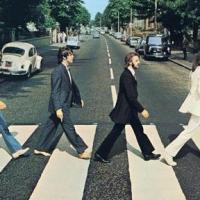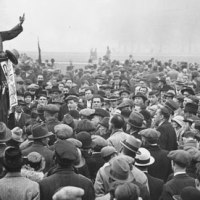It’s so bad it’s good….
 What’s “Good” about Good Friday?
What’s “Good” about Good Friday?
After all, it signifies a man abused and tortured, made to carry his own cross to be crucified, had nails hammered into his hands, a crown of thorns embedded in his head, and given vinegar to drink when he asked for water. It was clearly a very bad day.
“Good Friday”, possibly the most sacred day in the Christian calendar, appears to have been diminished by our secular and consumer led society. It’s certainly a good Friday for the new deities of consumerism – for the shopping malls and superstores, whose temples are open for worshippers. It’s a good day for atheists and agnostics, because they get a public holiday regardless of their beliefs.
Nobody really knows why the day of Christ’s crucifixion is called Good Friday. Indeed, there is no evidence that it actually happened on a Friday. It was a convenient date which married the early Christians to Pagan beliefs back in the post-Romano era.
There are two modes of thought: Good Friday was originally God’s Friday. This would make sense, because as time went by words change and develop. The Catholic Church is fairly open to this suggestion. Unlike Evangelical Bible-Thumpers who argue that it was “Good” because Christ gave his life on the Cross to save our souls. For all his suffering, it was filled with goodness they proclaim. Pre and post Romano Britain, Anglo Saxon, and medieval man would not have considered that, and certainly not the Benedictine monks who ruled with ecclesiastical hammers. Suffering and penitence was the order of the day – there was nothing to be happy about! “Christ suffered and so should you” they said. What’s good about that?
Meanwhile in Spanish Dominions, the Dominican monks ruled, and they would have dictated, absolutely, their expectations and rules, and were directly linked to the seat of the Spanish throne. The Dominicans (the religious quasi political branch of the Spanish Empire) were ruthless in their endeavours.
So what’s all this got to do with Good Friday? The simple answer is politics. Jesus didn’t choose Friday to die, nor did he choose Sunday to resurrect. Why? Because 2000 years ago the calender as we know it didn’t exist! Time revolved around the equinox. Rome and future Popes created the calendar – from the Julian to the Gregorian, and it was expedient for a Pope to embrace pagan celebrations aligned with Eostra – the pagan god of rebirth.
Emperor Constantine (the first Pope of Power) was a very clever chap. In order to unite his empire he knew he had to embrace all and alienate none. The dates of Easter has no more credence than the 25th December – the date of Christ’s birth. Christian’s do not question the date – it’s the event that matters.
Constantine needed a reference point: that which was before, and that which came after – Before Christ, and After Christ. BC and AD.
My analysis isn’t an academic study, it’s merely an observation. Yet there is little doubt that significant Christian dates were aligned with Pagan celebrations – it was expedient and convenient. Which brings us to Ostara, or Ēostre the pagan Goddess of Dawn and Rebirth. Note the word Goddess. Christianity gave us one god – God – yet here was a goddess worshipped in pre-Christian times, and she became associated with “Easter”. How is that? Easter is the association and celebration of Christ’s crucifixion and resurrection, yet, prudently Constantine combined the two. It was Constantine who brought the papacy to power, and effectively established the Catholic Church.
Does all this matter? Do dates matter? Does it matter that we have Easter eggs (another pre-Christian symbol of fertility and rebirth and don’t forget rabbits – we all know their proliferate skills). How many people actually think about that?
All that matters really is what Easter signifies – the persecution, betrayal, crucifixion and resurrection of one man who changed the world. We celebrate His birth at Christmas, lament his Death, and take joy in his Resurrection at Easter.
You may not believe it – but that doesn’t mean you can disprove it! Maybe that’s why it’s a “Good” Friday.
Game of Thrones
As usual I have arrived late to the party.
In this instance the "Game of Thrones" which is aired on Sky Atlantic.
I must admit I shy away from mythological fantasy, especially if penned by such questionable luminaries as J R R Tolkien, C S Lewis, and dare I say, J K Rowling. (Notice how each author initialises their moniker!)
So not being a Sky subscriber I was ignorant not only of the TV production but also the author who inspired it – George R R Martin (two initials in that one – must be a winning formula) from his collection of epic novels entitled "A Song of Ice and Fire".
Deja Vu – again! Brian Cox is back!
Brian Cox is visiting the Philippines. Who is he you ask?
Well Brian, Professor Brian, has experienced a phenomenal rise to fame, and his documentaries have been accused of excessively loud background music, and he has also been accused of being more style over substance.
This populist dumbing down and pandering to the lowest common denominator is indicative of modern educational programming.
I wrote about Brian a couple of years ago (D:Ream A Pale Reflection of a Blue Dot). I remarked in my post (a most entertaining read) that Brian was a particle physicist, but a rather lightweight particle (I was new to blogging at the time and seeking attention!).
Lacock – A Wizard of a Place……
 Mrs Bardiness (the world renown historian on Tudor affairs) and I, were not aware prior to our short break in the village of Lacock that it had been used several times in the Harry Potter movies.
Mrs Bardiness (the world renown historian on Tudor affairs) and I, were not aware prior to our short break in the village of Lacock that it had been used several times in the Harry Potter movies.
I'd heard that it had been used for Elizabeth Gaskell's Cranford by the BBC, as well as their production of Jane Austin's Pride and Prejudice.
We went primarily because it's a village owned by England's National Trust who have captured it in a time capsule.
There are no buildings here which are older than the 18th century. Many date back to the 15th century, and some as far back as the 13th. It was mentioned in the Domesday book of 1086, where it was recorded as having been both a Roman and Saxon settlement. Egads! You're in for a history lesson dear reader! 
Lacock Abbey was founded by Ela, Duchess of Salisbury in 1232, who was also the ward of Richard the Lionheart. It was even the place where the first photographic negative was created by William Fox-Talbot in the 1820's, whose ancestors acquired the village through William Sharrington who purchased the abbey from Henry VIII after his dissolution of the monasteries.
Sharrington set about converting the abbey into a manor house, although much of the original features remain. (I'm writing on the hoof so bear with me!)
Lakock is 100 miles west of London in Wiltshire on the River Avon, and about 10 miles from the City of Bath in Somerset. Bath is renown the world over for its Roman Baths and famous Georgian architecture, but Lacock is a village which was little known until after 1946 when the last of the line bequeathed it to the Trust. Latterly film and television companies discovered it, and nowadays the village accommodates four filming events every year. 
Yet surprisingly this is not a film set. Nor a fossilised village even though it is effectively frozen in time, but it is a living, thriving and working community of about 400 people with family shops and businesses that form it's life blood.
There are no ubiquitous yellow road lines or traffic signs, and the residents are not permitted to make external alterations to their buildings due to their graded listings, and any interior changes must be approved by the National Trust.
So don't think these residents are country bumkins – far from it. But they clearly value the uniqueness of their position, and indeed, outsiders who fancy living in it would go through a strict selection process.
The National Trust would only consider applications from people who have some historic or family connection with the village and be willing to be productive in the community. They certainly wouldn't entertain the second-home city dwellers looking for a holiday retreat. Which just goes to show money doesn't buy everything. 
As a local remarked to me – it may seem idyllic, but everyone knows everyone and privacy or seclusion is a luxury which cannot be afforded. When the film crews are present they have to suffer a great deal of inconvenience because invariably their properties will have cameras and lighting outside their homes until the early hours, and their movements are severely restricted.
In addition the village receives thousands of tourists from all over the world almost every day, and yet it seems very happy and accommodating. For all that, there is an incredible calmness and slow pace, and the locals know that hassle or not, they wouldn't give any of it up. Their children are encouraged to grow up in it, and to that end there is a primary school, and the older ones only have to travel three miles to Chippenham to get their senior education.
Families here are very fortunate for they live in a microcosm of history, embraced by the modern world which is theirs to utilise with ease, and yes…wifi is easily available! This is not a world akin to the secular Amish or Mennonite communities of North America with all their hang-ups – nothing could be further. These people are just regular Brits. 
You'd be forgiven for thinking, when walking around Lacock on a late summer evening, that you have been transported back in time. It's a time when the day-visitors have gone, and the village recovers itself. It's a time when the streets become quiet and the only sound is birdsong or the occasional trot of horses hooves on cobbles. Somewhere, in the local inns, people are eating and drinking, but they fade away unnoticed and unheard.
Residents sell plants, herbs, books and handmade items outside their homes. Just drop a pound through their letter-box. They even provide carrier bags. It's just a sideline. Not Amazon – but Avonon!
Sadly, things are going to change in Lacock. An employee of the Hotel we stayed in remarked that the yellow lines and parking signs are coming soon. Apparently all avenues have been considered, all options analysed, but over recent years they have failed. Many of the ever increasing flux of visitors which arrive are not willing to use the designated car-park outside the village, and drive with impunity throughout it in the belief that their car can take them anywhere. A village with no visible parking restrictions is an open invitation for a driver to abuse. Lacock's charm is it's lack of traffic and that is slowly being eroded.
The residents don't want the yellow lines on the road. They don't want the sign posts, but the times have dictated them. The parking cones which are dotted around are not working, and blight the scenery, so it's the lesser of two evils. This will change the village – the 21st Century has finally arrived – if not the 20th! 
Nevertheless, I suspect that after all said and done, it will protect the village further, and the film crews will just have to work harder and cover up the signage when they are present.
If they can cover the abbey with fake snow for Harry Potter and transform it into Hogwarts school of Witchcraft and Wizardry, they can do anything.
Lacock is a village where the history of England can be measured by each footstep. (The cauldron above dates from the 13th Century – it's not a facsimile!)
From the Roman Invasion of Britannia, through Saxon times, through the Plantagenets and Tudors, to the English Civil war with the Stuarts and Oliver Cromwell, to the Restoration, the Industrial Revolution and right up to the invention of photography. Now that's magic!







